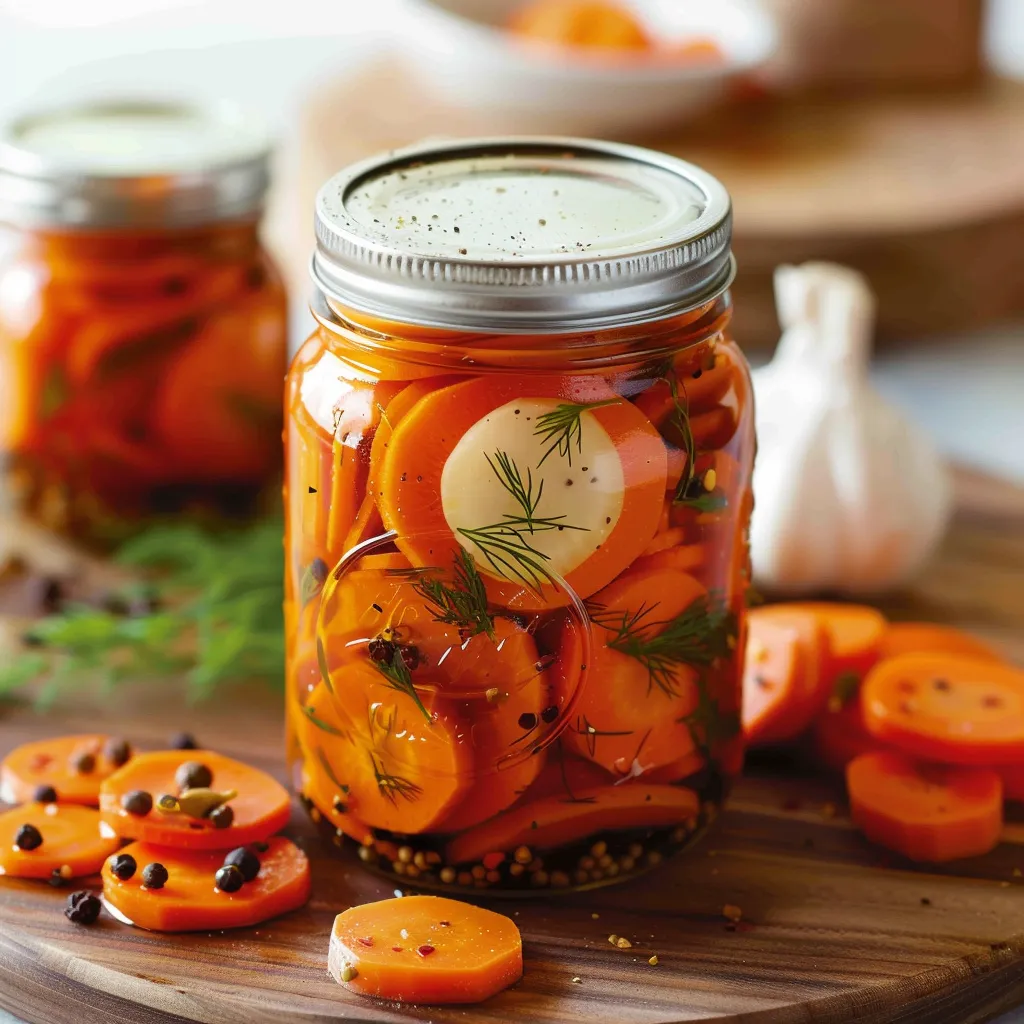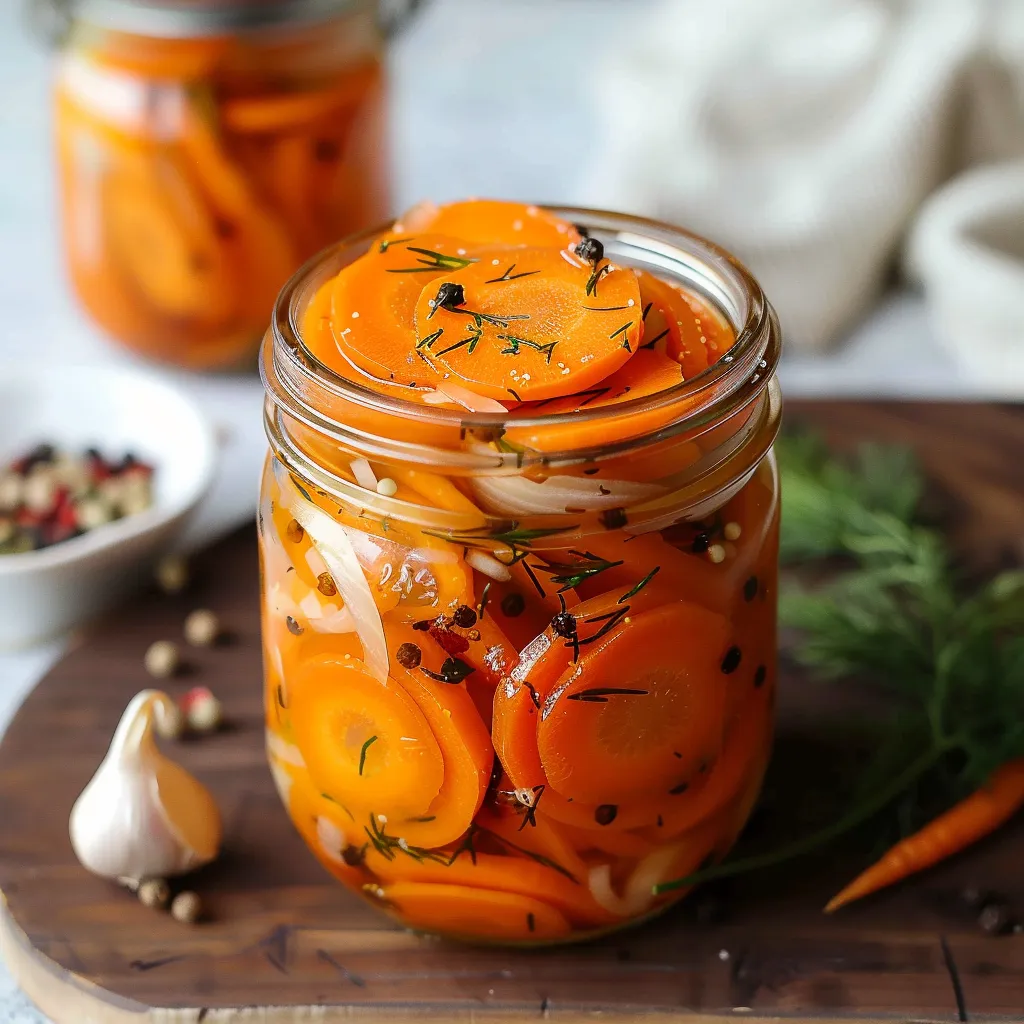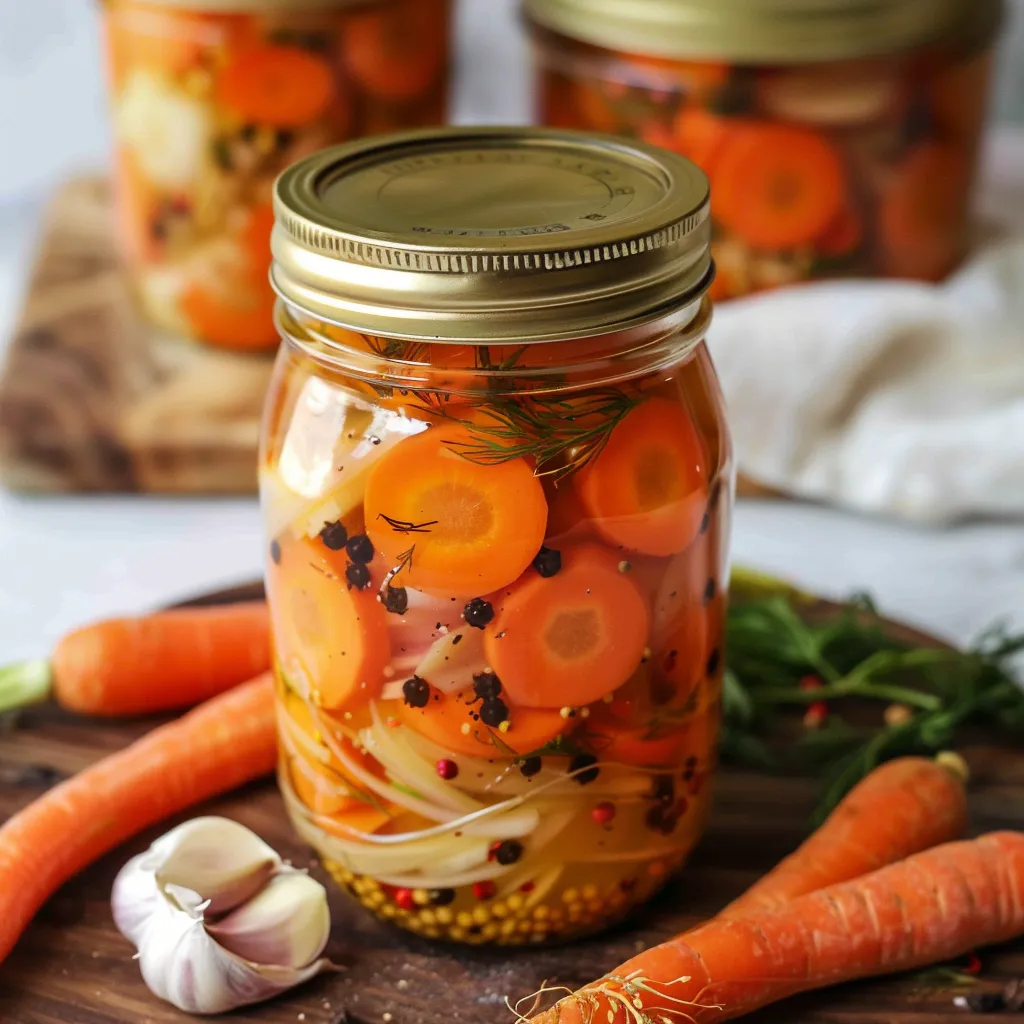 Pin it
Pin it
Tangy carrot pickles turn plain veggies into zesty, crunchy treats that liven up every dish. The satisfying snap combined with just the right amount of zip makes an addictive side for any table. These no-fuss pickled carrots take little work but pack tons of flavor, making them a go-to for both kitchen newbies and seasoned cooks wanting to jazz up everyday meals without much trouble.
During a cookout last year, I put these tangy carrots next to some barbecue, and my veggie-hating nephew kept sneaking them off the plate. The magic comes from the just-right brine—balanced between sweet and tangy—that lets the carrots' natural sweetness come through while adding layers of flavor you just don't get with plain carrots.
Key Ingredients and Shopping Advice
- Carrots: Go for crisp, bright ones with good color for best crunch.
- White Vinegar: Brings the zippy kick needed for proper pickling.
- Apple Cider Vinegar: Adds a hint of fruit flavor and richness to the mix.
- Fresh Dill: Gives a clean, green flavor that works magic with carrots.
- Garlic: Lightly smashed cloves send more flavor into your brine.
- Black Peppercorns: Add a mild warmth and depth to the finished pickles.
- Kosher Salt: Melts easily and doesn't leave a funny taste.
 Pin it
Pin it
Step-by-Step Cooking Guide
- Get Your Carrots Ready:
- Clean, peel, and cut into matching ¼-inch rounds or sticks.
- Quick-Cook for Ideal Bite:
- Drop in boiling water for just 2 minutes, then plunge into ice water.
- Mix Your Pickling Liquid:
- Heat water, vinegar, salt, sugar, and garlic together for 2 minutes.
- Set Up Your Containers:
- Wash pint jars and add layers of onion bits, black peppercorns, and dill.
- Fill Your Jars:
- Put carrots in evenly, leaving ½-inch space at top.
- Add the Warm Brine:
- Pour over carrots until covered, tap jars to push out air bubbles.
- Close and Rest:
- Let jars sit at room temp for 1 hour.
- Chill and Wait:
- Keep in fridge at least 24 hours, but they taste best after 3-4 days.
- Taste and Tweak:
- Try them after a day and add more vinegar or sugar if needed.
Colorful Carrot Twist
Try using different colored heirloom carrots in purple, yellow, and red for a jar that looks amazing and offers slightly different flavor notes. Stack them in layers for the best look.
Spice Rack Adventures
Playing with spices like star anise, coriander seeds, or mustard seeds can create totally different pickled carrot flavors that pair well with various meals.
Pickle Gathering Fun
I've thrown 'pickle-making get-togethers' with friends that sparked tons of new ideas, and these carrot pickles always end up being everyone's favorite.
Saving Summer Flavors
When you pickle garden carrots, you can enjoy their best-of-season taste well into winter, bringing a bit of summer sunshine to your cold-weather meals.
Homemade Treats
Stored in pretty jars with handmade labels, these pickled carrots make wonderful gifts for new neighbors or holiday exchanges.
My grandma always added a spoonful of honey instead of sugar in her pickled carrots—sometimes I use her trick when I want to feel like I'm back in her kitchen again.
I've been tweaking these pickled carrots for more than ten years now, making them better each time. Pickling has grown from just a way to keep food longer into a family tradition that ties me to my roots while making something tasty to share.
 Pin it
Pin it
Frequently Asked Questions
- → Is blanching carrots necessary before adding brine?
- Blanching softens carrots slightly, helping them soak up the flavors faster. Skip it if you like really crunchy pickles, but they might take longer to develop flavor.
- → Can I pickle different veggies with this brine?
- Totally! Try radishes, cucumbers, or even cauliflower. Adjust or skip blanching based on how firm the vegetable is.
- → Can I swap dried dill for fresh dill?
- Sure, use about 1 teaspoon of dried dill in place of each fresh sprig. The flavor shifts a bit but still tastes great.
- → Are these pickles okay to store in the pantry?
- No, they’re fridge-only. For pantry-safe jars, follow a proper canning process.
- → How do I cut down on salt in this recipe?
- Reduce the salt to just 1 tablespoon. The taste will change slightly, and they’ll need to be eaten within 2 weeks.
